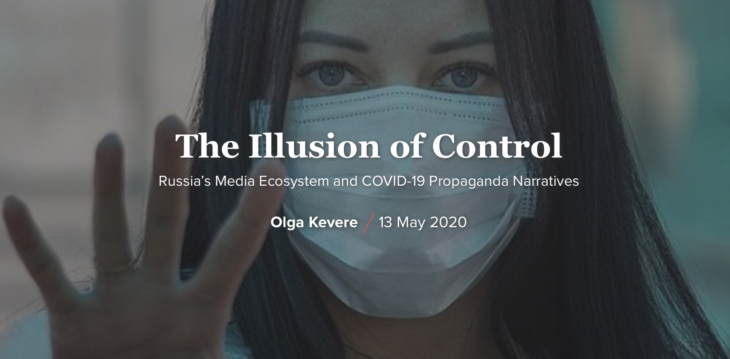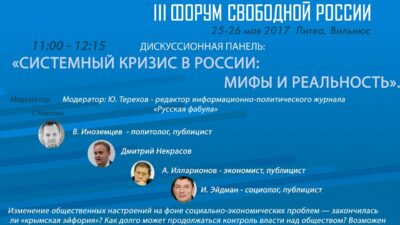Russia’s Media Ecosystem and COVID-19 Propaganda Narratives

Russia now faces a full-fledged COVID-19 crisis at home. The Russian media are diverting attention from the domestic situation and therefore is not reporting on prison riots, outbreaks and lockdowns across the country.
In our monitoring of the Russian media ecosystem, which targets both domestic and international Russian-speaking audiences, we aim at assessing how COVID-19 related Russian propaganda is evolving in the media.
Since mid-March, the situation in Russia regarding the pandemic crisis has seen dramatic changes: there are sky-rocketing numbers of COVID-19 infections, the development of local hotbeds, a health care system that is barely managing the situation and brewing social unrest.
This, of course, is not reported in the official media.
Fighting fake news
 We analysed publications of state-controlled international agencies, domestic news agencies, media closely associated to the presidential administration, oligarchs and State Duma actors as well as Russia-backed media and Telegram-channels which target audiences in the region of the former Soviet Union.
We analysed publications of state-controlled international agencies, domestic news agencies, media closely associated to the presidential administration, oligarchs and State Duma actors as well as Russia-backed media and Telegram-channels which target audiences in the region of the former Soviet Union.
Several narratives have been emerging in the last two months. One of them concerns the fight against fake news since late March and the beginning of April.
This is obviously a reaction to reports by the US and the EU state agencies and media regarding Russian COVID-19 disinformation, but not only that. It is aimed both at international and domestic audiences.
At first, it was a mix of articles ranging from tips how to discern real information from fake news and misinformation on COVID-10 to publications directly attacking US and EU Russian disinformation reports as ungrounded and “shifting the blame onto Russia.”
In just two weeks, it evolved into reversing the blame and pointing at the West as the alleged source of fake news and conspiracy theories. These are collections of the most outrageous conspiracy theories about the “Western origin” of the virus, targeting both domestic and international readers and which are taken from the marginal websites in the US and EU.
These collections are used to “educate” and also are often linked in manipulative articles, whitewashing China, or confusing readers about the real purposes of the US investigation into the origins and the spread of coronavirus.
Russian media would also eagerly quote fake news or misinformation published by the Western media to support their own statements about the West being a source of fake news.
In some instances, such as a New York Times article on “Putin’s war against US science”, the contents of the article are re-written in a manipulative manner or interpreted in a way that ridicules the whole article.
For example, these following ideas were promoted in the Russian media: the US have poorly educated people who are eagerly falling for conspiracy theories. They are blaming Russia for the poor education of Americans and the failure of the American healthcare system.
Manual for the media
Moreover, the Fund for the Defence of National Values (linked to businessman Yevgeny Prigozhin) has developed a manual on countering COVID-19-related fake news and disinformation for the domestic audience.
This manual identifies the West, as hostile to Russia, and the Russian opposition, as working for the West, as the two main sources of fake news.
The fund also advocates, through the government-controlled and related media, for large fines and public shaming for those who “spread fake news” and for the absolute prohibition of anonymity on the Internet.
The head of the fund has also repeatedly attacked Facebook, YouTube, and other Western social media platforms as sources of fake news concerning COVID-19.
This narrative of fighting COVID-19-related fake news is used inside Russia for attacking the West, the Russian opposition and social media that refuse to cooperate with Russian security services, while shifting the blame regarding disinformation and reducing trust in Western and opposition media.
Confusing the readers
Russian propaganda attacks the recent US investigation into the spread of COVID-19 by ridiculing it to the level of conspiracy theories.
However, it goes beyond this. The whole coverage has been aimed at confusing the reader on the real subject of the investigation, limiting it to Trump’s quotes and ridiculing them, or mixing it with the issues such as multiple nations’ default on their debts to China and possible lawsuits against China for the origin of the virus.
Narratives within this stream of propaganda promote the idea that the US wants to get rid of its main competitor, is looking at the man-made origins of the virus (although it has been shown to be natural), cancel its debts and meanwhile divert attention from the fact the virus may have originated from a US lab.
Stories concerning the World Health Organisation are also manipulated in a similar manner, to show how the international body fell victim of a stand-off between the US and China and how a temporary free of funding was done for electoral gain. Moreover, the organisation is being punished for the fact it does not want to follow the US in “blaming China” for COVID-19.
Russia’s army is the best
Other narratives have been less dominant but developing in recent weeks. For example, propaganda has been spreading about the fact that the US is unable to contain the spread of COVID-19 in the Army, especially in the Navy. Because of this, the US will soon be unable to fight a war. And US and NATO military bases across the world are spreading COVID-19 to host countries. The virus is portrayed as “the new Pearl Harbour for the US Army.”
Russian media also claim that nations such as Italy and Spain are unable to fight coronavirus properly because they have spent too much money on their contributions to NATO – upon the request of the US.
Assistance to Italy by the Russian military medics was shown to be a good example of success.
If we take the examples of propaganda at face value, then the Russian Army and specifically its troops for Radiation, Chemical and Biological Defence are better prepared to counter any contagion and should be used to assist the neighbours in need, such as Belarus and Ukraine.
This narrative has evolved in recent weeks from simply calling neighbouring countries “COVID-19 hotbeds” and calling the EU a “plague barrack” into a new message, where Russia is the only hope and saviour for the former parts of the empire.
EU assistance to the Eastern Partnership countries was presented as a subject to contest and as causing wrath in these countries. “Successful management” of COVID-19 by Russia is used to justify the annexation or the de-facto Russian control of separatist territories like Crimea or Transnistria.
The COVID-19-related crisis management is also used to promote the Eurasian Economic Union as coordination, cooperation, food security and medical aid distribution platform.
Lifting sanctions
As a consequence, there has also been a trend to promote the lifting of Western sanctions in different combinations, masked as humanitarian concern, as possible help for poorer states fighting Covid-19 or as a form of care for the plummeting EU economy.
In the last week of March, a grand plan unfolded.
First, it was the active use of a letter sent by the UN Secretary-General on measures to curb the spread of COVID-19. While it had only a single line on sanctions, this was enough for Russian propaganda to pitch it as the main message from the UN.
Then, there was Putin’s proposal to the G20 during its virtual summit, which included the lifting of sanctions. And, finally, there was an attempt to get a resolution through the UN General Assembly on lifting sanctions – which failed.
Russia and China were the principal driving forces behind the draft resolution. Since the attempt to pull through the resolution failed, it gave Russian propaganda a reason to accuse the US, the EU, Georgia and Ukraine of selfishness, while presenting itself and China as humanitarian leaders of the world.
Diverting attention
As said in the introduction, Russia now faces a full-fledged COVID-19 crisis at home. The Russian media are diverting attention from the domestic situation and therefore is not reporting on prison riots, outbreaks in cities like Syktyvkar and villages and even towns such as Petushki in the Moscow region that are fully locked down because of the severity of the situation.
At the same time, the situation is used to silence all forms of dissent. The Duma discusses yet another tightening of the foreign agents’ law, disinformation on COVID-19 is blamed on the opposition and the West. Everything that is not in line with the government’s version of the situation is called “disinformation” and punished.
Those who criticise or do not praise the government efforts are labelled “ungrateful”, while Western citizens “grateful” to Russia are cited as an example.
As crazy as it sounds, the currently dire situation is also used to promote “traditional values,” claiming that COVID-19 is God’s punishment for homosexual relations and lush, spiritless life.
Official media outlets send murky messages about a Russian cure for the virus, which turns out to be generic foreign medicines used as part of a standard treatment protocol.
The poor management of the crisis is compensated by draconian fines and excessive regulation of people’s movement. COVID-19 is also used as a reason for total control of the public through electronic passes and numerous face recognition cameras, at least in Moscow and St. Petersburg.
All this is crowned by claims that Vladimir Putin has everything under control. If we believe the propaganda, then Russia was long ready for the crisis, has enough healthcare capacity to handle the crisis. Its economy is in a shape to endure the storm much better than that of the EU and the US.
The real situation in Russia tells a different story.



